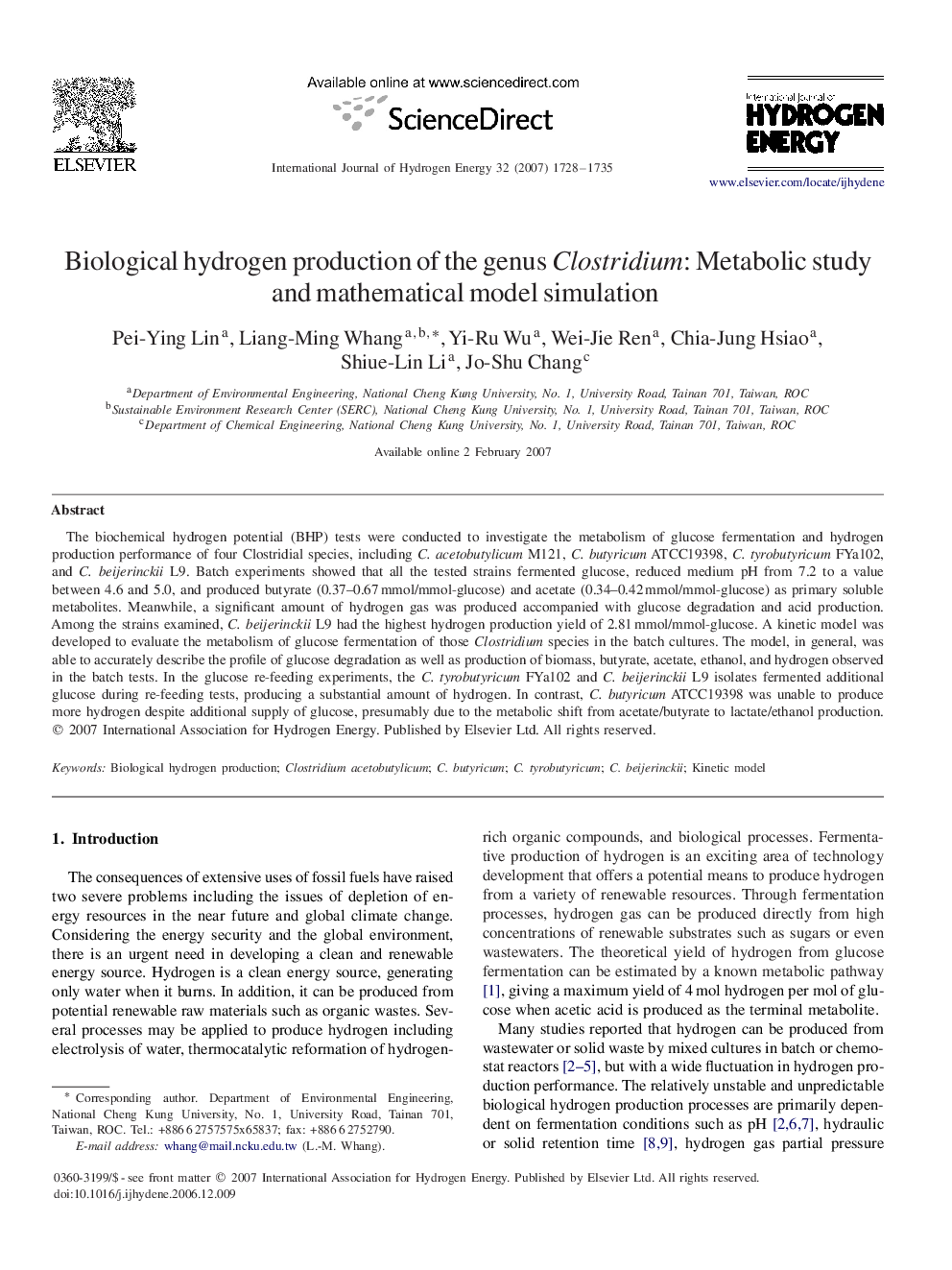| Article ID | Journal | Published Year | Pages | File Type |
|---|---|---|---|---|
| 1274967 | International Journal of Hydrogen Energy | 2007 | 8 Pages |
The biochemical hydrogen potential (BHP) tests were conducted to investigate the metabolism of glucose fermentation and hydrogen production performance of four Clostridial species, including C. acetobutylicum M121, C. butyricum ATCC19398, C. tyrobutyricum FYa102, and C. beijerinckii L9. Batch experiments showed that all the tested strains fermented glucose, reduced medium pH from 7.2 to a value between 4.6 and 5.0, and produced butyrate (0.37–0.67 mmol/mmol-glucose) and acetate (0.34–0.42 mmol/mmol-glucose) as primary soluble metabolites. Meanwhile, a significant amount of hydrogen gas was produced accompanied with glucose degradation and acid production. Among the strains examined, C. beijerinckii L9 had the highest hydrogen production yield of 2.81 mmol/mmol-glucose. A kinetic model was developed to evaluate the metabolism of glucose fermentation of those Clostridium species in the batch cultures. The model, in general, was able to accurately describe the profile of glucose degradation as well as production of biomass, butyrate, acetate, ethanol, and hydrogen observed in the batch tests. In the glucose re-feeding experiments, the C. tyrobutyricum FYa102 and C. beijerinckii L9 isolates fermented additional glucose during re-feeding tests, producing a substantial amount of hydrogen. In contrast, C. butyricum ATCC19398 was unable to produce more hydrogen despite additional supply of glucose, presumably due to the metabolic shift from acetate/butyrate to lactate/ethanol production.
